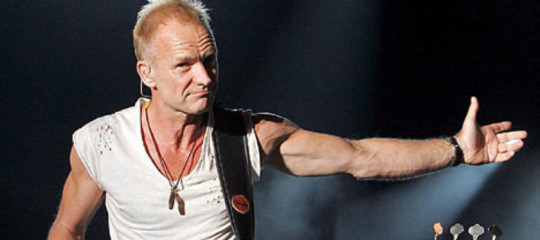Wine: Tuscany uses Sting as global testimonial

Florence - Tuscan wine takes the global stage. On 11 February, the regional Councilor for Agriculture officially opened the week of Wine Previews in Florence, featuring 16 Tuscan Wine Consortia and Sting as their testimonial. The opening event took place at Fortezza da Basso on the second and final day of the Buy Wine event, the largest trade show for Tuscan wines. The opening drew journalists, industry operators, and large buyers from all over the world. In addition to the regional councilor, the welcoming hosts included Fabio Del Bravo, Rural Development Director of ISMEA (Istituto di servizi per il mercato agricolo alimentare - Institute for Services for the Food Market) and Luca San Just di Teulada, President of A.Vi.To., the associated Tuscan consortia. The global aspirations of the event were highlighted by the presence of Sting and his wife Trudie Styler, who owns a winery near Florence. Before the inaugural toast, Sting sang alongside Jamaican singer Shaggy - a surprise guest of the Previews - the hits "Message in a bottle" and "Don't make me wait", a song also performed by the duo at the Sanremo Song Festival. The Councilor for Agriculture thanked everyone who contributed to the success of the event: the regional administration, PromoFirenze and especially the 16 consortia and all the Tuscan wine producers who count on their skills to face the challenge of a difficult global market. "It is important to stay with the market", he remarked, "and show that Tuscany and its culture are what makes its wine special". The Councilor also commented that Tuscan wineries are dynamic enterprises, which invest and innovate to go to market and are ready to face market challenges. "The consortia work well and the Tuscan regional administration works with them, because it is committed to help when markets get tough, as shown by the success of BuyWine and the many contacts it brought to producers", the Councilor added. Finally, the Councilor reported on a new rule approved by the Regional Council following recent laws on replanting. Tuscany was allocated 600 thousand hectares for new plants, and the regional rules protects Tuscan vines and farmers against aggressive neighbors. The provisions require those who come to manage Tuscan wineries to wait seven years before they can grub and replant. The Councilor assured that Tuscany will bring this commitment to the National level. Tuscany was the first region to make a move in this direction, and will continue to protect its producers. The presentation was followed by the Previews, with the tasting of the best bottles of the latest production from 11 Tuscan consortia: Carmignano, Casole d'Elsa, Colline Lucchesi, Cortona, Elba, Maremma Toscana, Montecarlo di Lucca, Montecucco, Pitigliano e Sovana, Val di Cornia and Valdarno di Sopra. The Previews will carry on until Saturday 17, moving to five other consortia: Chianti, Chianti Classico, Vernaccia di San Gimignano, Nobile di Montepulciano and Brunello di Montalcino, ensuring that wine tasting follows visits to the companies, the cellars, the land and landscapes that produce Tuscan wines. BuyWine closed on 11 February: 215 Tuscan wineries took part in this two-day event that brought buyers and producers together, bringing them face to face with 190 buyers from 39 countries, including Unites States, China, South Korea, Brazil, Azerbaijan and Colombia. This event, showcasing Italian wine in front of the press and the world markets, was also a great opportunity to look at last year's production with an Ismea report on Tuscan wines in 2017. Statistics show that climate change in 2017 impacted on production (it was a year of severe drought): wine production in the 22,000 featured Tuscan wineries fell by 38% over the previous year, to one million and 600,000 hectoliters. However, this did not dent the strength of this sector, whose production is almost entirely certified (there are 58 DOP and IGP labels) and whose value approaches one billion euros per year, only counting certified production, while 2017 quality promises to be outstanding.

